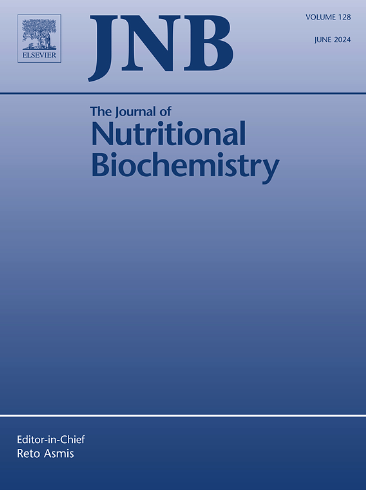健康和疾病中的铁代谢和铁下垂:线粒体在代谢活性组织中的关键作用。
IF 4.9
2区 医学
Q1 BIOCHEMISTRY & MOLECULAR BIOLOGY
引用次数: 0
摘要
铁在各种生理过程中都是必不可少的,但铁的积累会导致氧化应激和细胞损伤,因此必须严格调节铁的平衡。铁凋亡是一种铁依赖性的非凋亡调节性细胞死亡,其特点是铁超载和 ROS 积累。线粒体是在铁代谢中发挥关键作用的细胞器,也参与了铁凋亡。线粒体外膜蛋白质 MitoNEET 是这一过程中的关键因素。铁变态反应会改变多个代谢活跃器官中的铁含量,与多种非传染性疾病有关。例如,肝脏中的铁超载会导致肝纤维化和肝硬化,加速非酒精性脂肪肝的发展;肌肉细胞中的铁超载会造成氧化损伤,导致肌肉疏松症;大脑中的铁超载则与神经变性有关。本综述旨在研究铁调节的复杂平衡,重点关注线粒体和氧化应激的作用,并分析铁氧化在健康和疾病中的影响。本文章由计算机程序翻译,如有差异,请以英文原文为准。

Iron metabolism and ferroptosis in health and diseases: The crucial role of mitochondria in metabolically active tissues
Iron is essential in various physiological processes, but its accumulation leads to oxidative stress and cell damage, thus iron homeostasis has to be tightly regulated. Ferroptosis is an iron-dependent non-apoptotic regulated cell death characterized by iron overload and reactive oxygen species accumulation. Mitochondria are organelles playing a crucial role in iron metabolism and involved in ferroptosis. MitoNEET, a protein of mitochondrial outer membrane, is a key element in this process. Ferroptosis, altering iron levels in several metabolically active organs, is linked to several non-communicable diseases. For example, iron overload in the liver leads to hepatic fibrosis and cirrhosis, accelerating non-alcholic fatty liver diseases progression, in the muscle cells contributes to oxidative damage leading to sarcopenia, and in the brain is associated to neurodegeneration. The aim of this review is to investigate the intricate balance of iron regulation focusing on the role of mitochondria and oxidative stress, and analyzing the ferroptosis implications in health and disease.
求助全文
通过发布文献求助,成功后即可免费获取论文全文。
去求助
来源期刊

Journal of Nutritional Biochemistry
医学-生化与分子生物学
CiteScore
9.50
自引率
3.60%
发文量
237
审稿时长
68 days
期刊介绍:
Devoted to advancements in nutritional sciences, The Journal of Nutritional Biochemistry presents experimental nutrition research as it relates to: biochemistry, molecular biology, toxicology, or physiology.
Rigorous reviews by an international editorial board of distinguished scientists ensure publication of the most current and key research being conducted in nutrition at the cellular, animal and human level. In addition to its monthly features of critical reviews and research articles, The Journal of Nutritional Biochemistry also periodically publishes emerging issues, experimental methods, and other types of articles.
 求助内容:
求助内容: 应助结果提醒方式:
应助结果提醒方式:


